Scroll down!
Brief Background 🔗
Lavasseur entered history as a pirate in 1716, when he joined the pirate captain Benjamin Hornigold. Around this year Olivier Le Vasseur, called “La Buse” sailed as a pirate in the Caribbean. Due to the intensified pirate hunt in the Caribbean, Levasseur then sailed towards Africa, where he finally arrived in the Indian Ocean via the Gulf of Guinea. It is only from this time on that the voyage of the pirate captain La Buse becomes interesting for us from the point of view of the lost gold treasure.
The history and exploits of Olivier Levasseur are in many cases unclear, and no historian has been able to point out the pirate’s course with certainty as well. In that sense, the precise and absolutely date-faithful prehistory is only conditionally relevant. We are interested in the history or the ship route of the pirate La Buse mainly for the reason to know which islands he knew well and where he had already anchored. Basically, these are all potential places where he could have returned in the further course of the story to hide the treasure of millions.
Arrival in the Indian Ocean 🔗
Island of Mayotte, July-25-1720 🔗
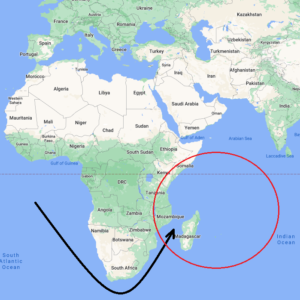 According to Johnson, La Buse reappeared in Mayotte around 1720. Dressen (2019, appendix page xii, Ventura Verlag) lists the date July 25, 1720. Here, Captain La Buse is said to have run aground with his ship, the Indian Queen, off the island of Mayotte and thus suffered shipwreck.
According to Johnson, La Buse reappeared in Mayotte around 1720. Dressen (2019, appendix page xii, Ventura Verlag) lists the date July 25, 1720. Here, Captain La Buse is said to have run aground with his ship, the Indian Queen, off the island of Mayotte and thus suffered shipwreck.
The English pirate Taylor, in possession of a second ship, offered to join him (http://ybphoto.free.fr/piste_la_buse_yb_1.html).
Mascarenes, Mauritius, Summer/Autum 1720 🔗
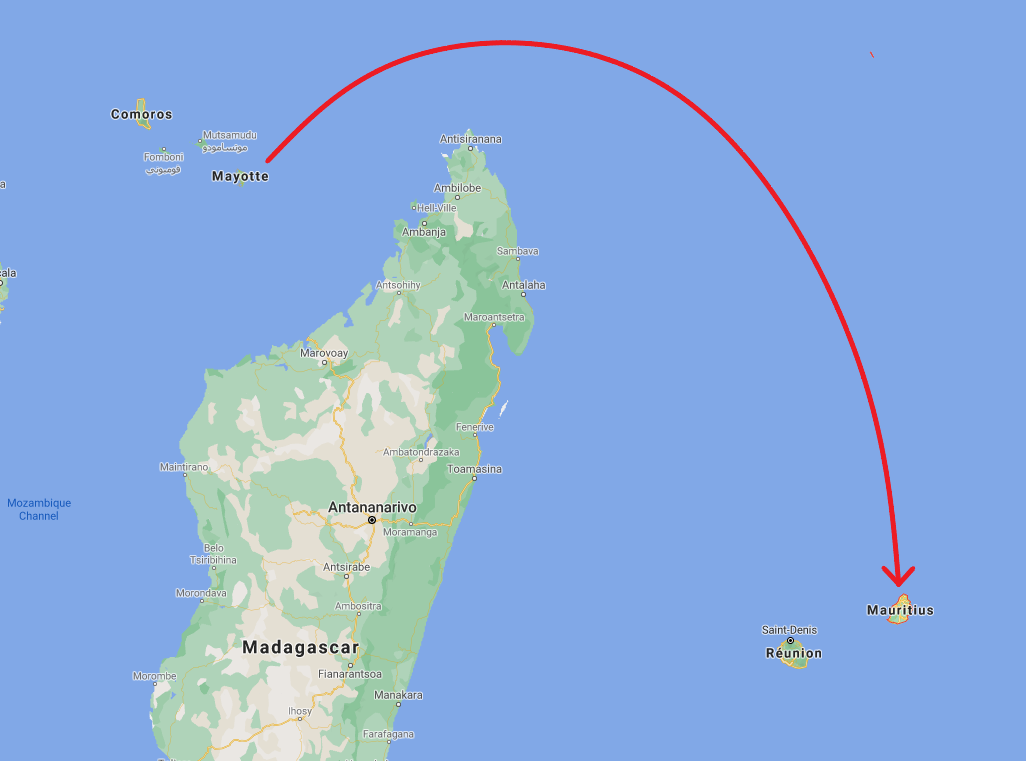 Back at the Mascarenes (Isle group around La Réunion and Mauritius), Taylor and La Buse are said to have decided to abandon Captain Edward England, with whom they had fallen out, on Mauritius (formerly: L’isle de France). (https://de.wikipedia.org/wiki/La_Buse) “Levasseur and Taylor eventually got tired of England’s humanity and marooned him on the island of Mauritius” (https://en.wikipedia.org/wiki/Olivier_Levasseur) “Lavasseur’s plundering made its way to Madagascar where he teamed up with pirates John Taylor, Jasper Seagar, and Edward England. Eventually, the gang would grow tired of Edward England’s outbursts of humanity (sparing a captain’s life after taking over his ship), and so they left him marooned on the island of Mauritius” (http://www.the13thfloor.tv/2017/07/07/can-you-solve-the-deadly-300-year-old-cryptogram-of-pirate-olivier-lavasseur/)
Back at the Mascarenes (Isle group around La Réunion and Mauritius), Taylor and La Buse are said to have decided to abandon Captain Edward England, with whom they had fallen out, on Mauritius (formerly: L’isle de France). (https://de.wikipedia.org/wiki/La_Buse) “Levasseur and Taylor eventually got tired of England’s humanity and marooned him on the island of Mauritius” (https://en.wikipedia.org/wiki/Olivier_Levasseur) “Lavasseur’s plundering made its way to Madagascar where he teamed up with pirates John Taylor, Jasper Seagar, and Edward England. Eventually, the gang would grow tired of Edward England’s outbursts of humanity (sparing a captain’s life after taking over his ship), and so they left him marooned on the island of Mauritius” (http://www.the13thfloor.tv/2017/07/07/can-you-solve-the-deadly-300-year-old-cryptogram-of-pirate-olivier-lavasseur/)
Sainte-Marie Island, Summer/Autum 1720 🔗
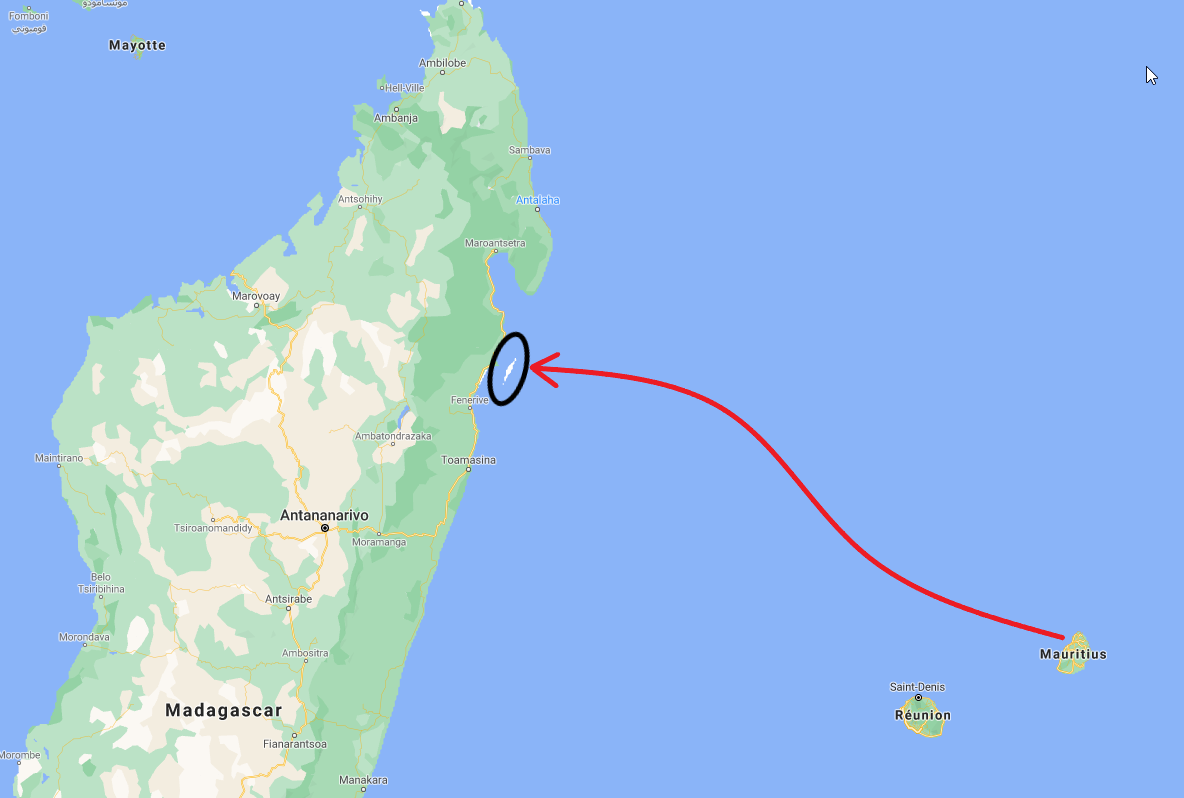 According to Dressen (2019, Appendix page xiv, Ventura Publishing), the two ships with captains La Buse and Taylor sailed on to Sainte Marie island (formerly: Nossi Ibrahim or Nosy Bohara. Today also known as St. Mary’s island or Île Sainte-Marie). According to various sources, Sainte Marie served as a base and pirate hideout for La Buse. (http://www.the13thfloor.tv/2017/07/07/can-you-solve-the-deadly-300-year-old-cryptogram-of-pirate-olivier-lavasseur/)
According to Dressen (2019, Appendix page xiv, Ventura Publishing), the two ships with captains La Buse and Taylor sailed on to Sainte Marie island (formerly: Nossi Ibrahim or Nosy Bohara. Today also known as St. Mary’s island or Île Sainte-Marie). According to various sources, Sainte Marie served as a base and pirate hideout for La Buse. (http://www.the13thfloor.tv/2017/07/07/can-you-solve-the-deadly-300-year-old-cryptogram-of-pirate-olivier-lavasseur/)
“Since then, Olivier Levasseur has acquired two well-deserved attributes of the sea wolf: a permanent base on the island of Sainte-Marie (now Nosy Buraha, refers to the territory of Madagascar), where the rapidly growing treasury was brought, and the nickname the buzzard.” (https://areal-tur.ru/en/italiya/klady-olive-levass-ra-poslednyaya-shutka-pirata-olive-levass-r—francuzskii.html)
“La Buse frequented the waters of Madagascar, Mauritius, Seychelles, the Mozambique Channel, and Réunion Island. When he wasn’t hunting the seas, he holed up on Île Sainte Marie.” (https://www.wanderabout.me/index.php/pirate-la-buse-reunion-island/)
Mascarenes, La Reunion Island, Winter 1720 🔗
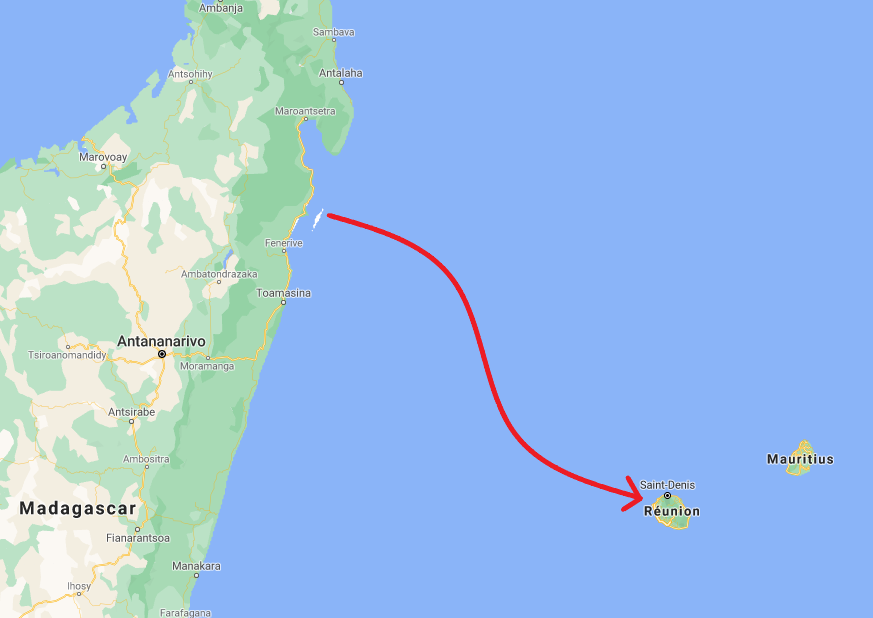 Now they made their way again to the archipelago of the Mascarenes, more precisely to the island of La Réunion (formerly: Isle of Bourbon or Mascarine Island. Today also called Reunion Island). (http://ybphoto.free.fr/piste_la_buse_yb_1.html)
Now they made their way again to the archipelago of the Mascarenes, more precisely to the island of La Réunion (formerly: Isle of Bourbon or Mascarine Island. Today also called Reunion Island). (http://ybphoto.free.fr/piste_la_buse_yb_1.html)
Dressen (2019, appendix page xiv, Ventura Verlag) mentions the period around the end of the year 1720 for this.
In general, very little is known about the first approach to La Reunion of the pirate La Buse.
We are trying to find out more information about the port, the bay and the anchorage.
Additional info: Pirates do not settle in Bourbon, but make frequent stops. The colonists do not complain about it: They gladly trade with them and bypass society. The local authorities are discouraged in the fight against piracy and decide to offer amnesty to any repentant pirate who settles in Bourbon. (http://www.ticaz.com/article.php?art=548)
Unclear journey: 🔗
Maldives, Winter 1720 🔗
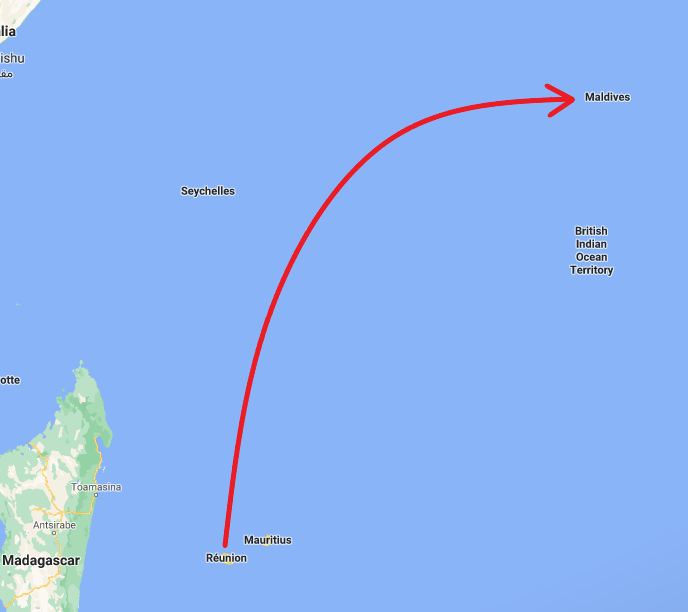 Dressen (2019, appendix page xiv, Ventura Publishing): Maldives.
Dressen (2019, appendix page xiv, Ventura Publishing): Maldives.
Lakkadives, Winter 1720 🔗
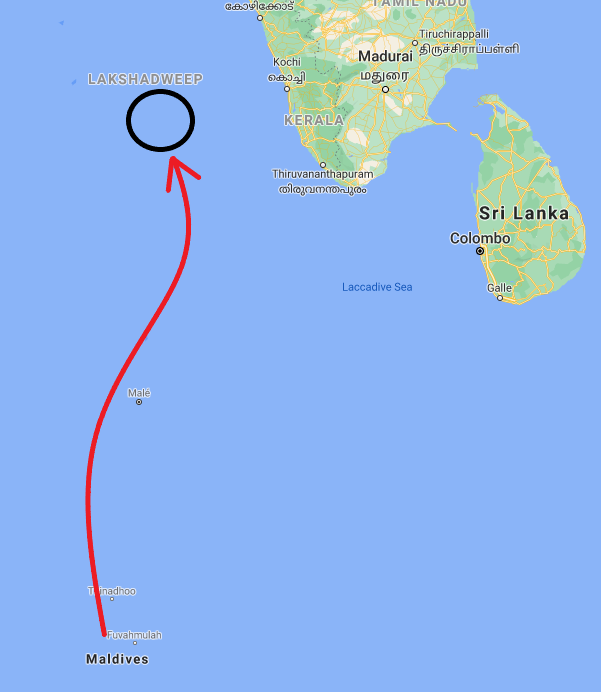 Dressen (2019, appendix page xiv, Ventura Publishing): Lakkadives. Here, however, the year 1720 is still given on (http://ybphoto.free.fr/piste_la_buse_yb_1.html section 7)
Dressen (2019, appendix page xiv, Ventura Publishing): Lakkadives. Here, however, the year 1720 is still given on (http://ybphoto.free.fr/piste_la_buse_yb_1.html section 7)
Cochin Coast, Winter 1720 🔗
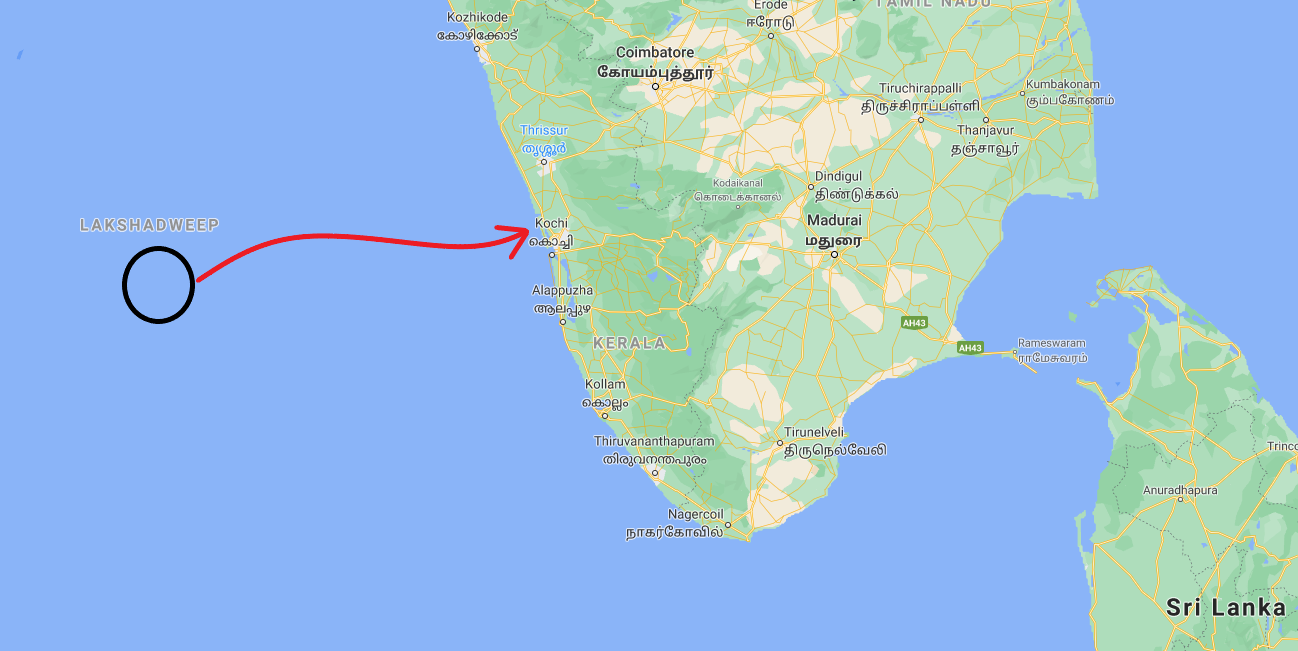 Dressen (2019, appendix page xiv, Ventura Publishing): Cochin on the Malabar Coast.
Dressen (2019, appendix page xiv, Ventura Publishing): Cochin on the Malabar Coast.
Seychelles, Winter 1720 🔗
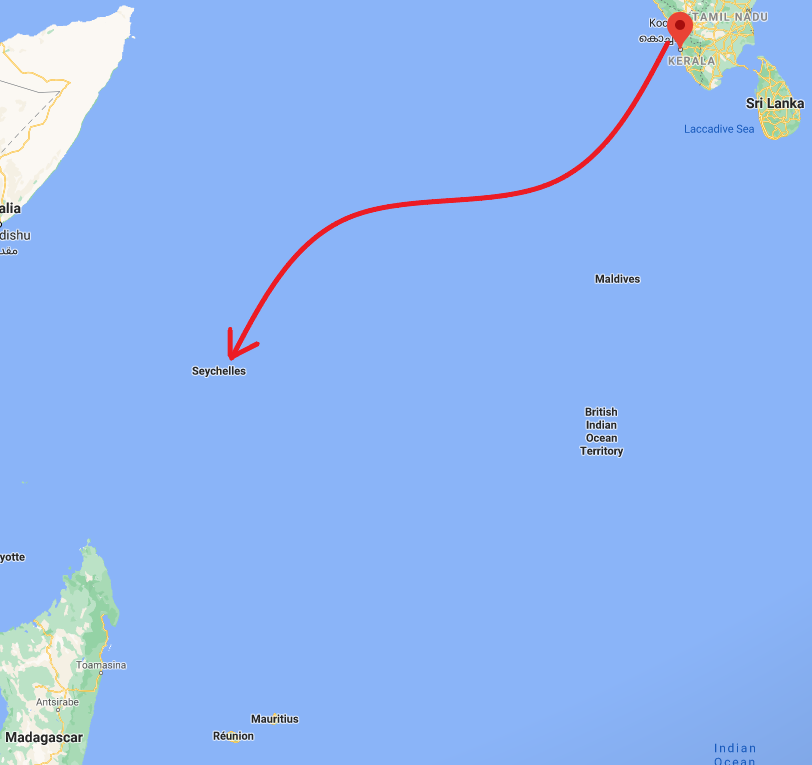 We consider that La Buse sailed with his pirate ship from the Cochin coast via the Seychelles towards Mauritius.
We consider that La Buse sailed with his pirate ship from the Cochin coast via the Seychelles towards Mauritius.
Mauritius, January 1721 🔗
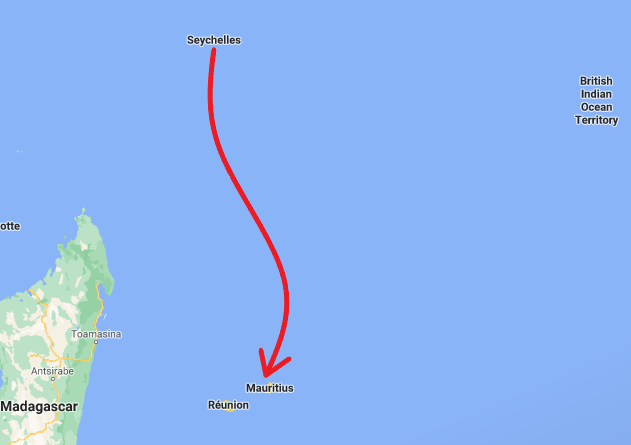 Dressen (2019, appendix page xiv, Ventura Publishing): Mauritius
Dressen (2019, appendix page xiv, Ventura Publishing): Mauritius
La Reunion (2nd time), February 1721 🔗
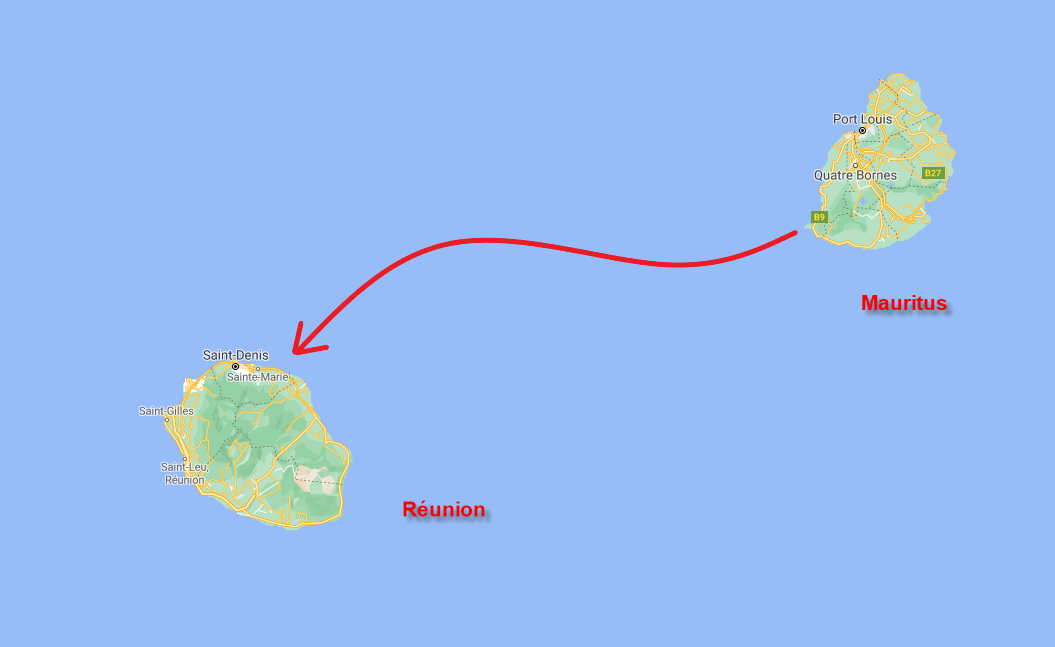 Dressen (2019, Appendix page xv, Ventura Publishing): Reunion Island (formerly called Isle of Bourbon or Mascarine Island. Today also called Reunion Island). More specifically, in the bay of Saint-Denis. The authors on (http://ybphoto.free.fr/piste_la_buse_yb_1.html section 9) list here again February 1721.
Dressen (2019, Appendix page xv, Ventura Publishing): Reunion Island (formerly called Isle of Bourbon or Mascarine Island. Today also called Reunion Island). More specifically, in the bay of Saint-Denis. The authors on (http://ybphoto.free.fr/piste_la_buse_yb_1.html section 9) list here again February 1721.
However, as already mentioned, in this part of the history of La Buse we are mainly interested in the islands, bays and harbors visited, not the exact date.
April 1721 🔗
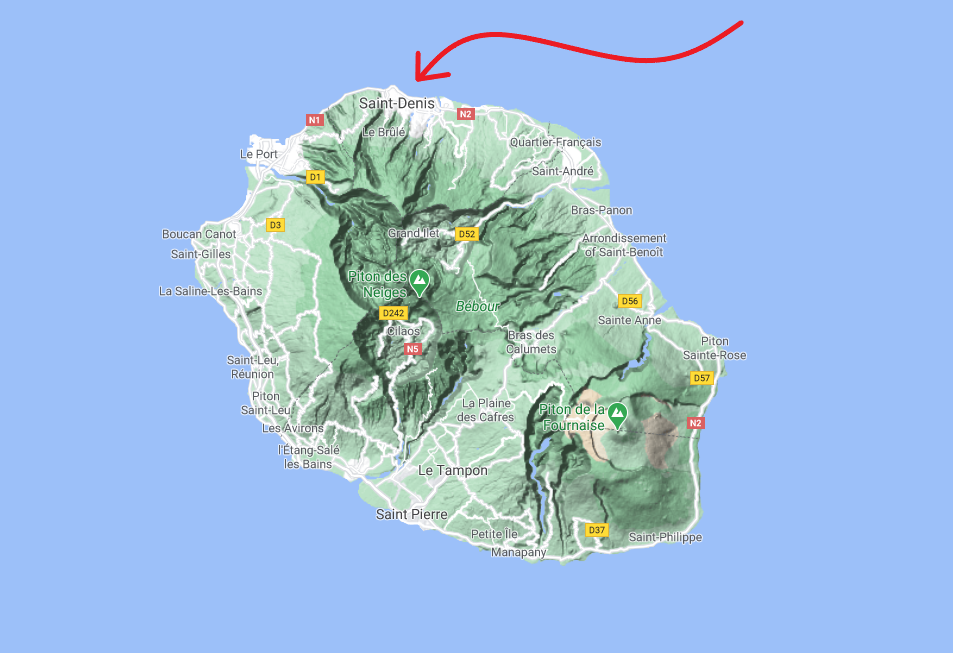 As of this date, Johnson’s accounts correspond to the historical records of various European archives. (https://de.wikipedia.org/wiki/La_Buse)
As of this date, Johnson’s accounts correspond to the historical records of various European archives. (https://de.wikipedia.org/wiki/La_Buse)
Nossa Senhora do Cabo e São Pedro 🔗
On April 8, 1721, the two pirate ships under the command of Captain “La Buse” and Captain Taylorn arrive in the port of Saint-Denis, where they discover a ship under repair, the “Nossa Senhora do Cabo” (Our Lady of the Cape) also known as the Virgem Do Cabo (The Virgin of the Cape). This flagship of the Portuguese fleet of Goa, weighing over 800 tons and with an awe-inspiring 72 guns on two decks, had been damaged by storms during the passage from India to Portugal.
The ship was loaded with almost ten years of accumulated treasures belonging to the Bishop of Goa and the Viceroy of Portugal.
In contrast to the heavy armament of the Nossa Senhora do Cabo, Levasseur had only 26 cannons aboard his ship and Taylor had even fewer cannons on his ship. Now, however, it lay very badly damaged and almost unable to maneuver in the port of Saint-Denis on Reunion Island. Moreover, most of the crew is ashore and many of the cannons are not in position to fire.
The two pirate ships raise the black flag and attack the “Nossa Senhora do Cabo”. After a fierce battle, the crew of the “Nossa Senhora do Cabo” surrenders.
[http://www.francoisegomarin.fr/2012/12/05/hommes-celebres-de-la-reunion-10-la-buse/]
| 1721-04-26 Saint Denis, Reunion | Nossa Senhora do Cabo was taken by pirates 88 La Buse (Le Victorieux, 36 guns, 200 men) and Seagar (Fancy, 38 guns, 280 men) takes ... [http://www.historylogbook.org/index.php/show-item?Itemid=126&option=com_content&view=article&id=26&itemId=26] |
 The pirates are amazed by the precious treasure. The cargo of this ship consisted of a large cargo of diamonds, jewelry, gold and silver bars as well as pearls, fine fabrics, spices, furniture and precious stones including the Golden Cross of Goa, which is said to have weighed more than a hundred kilograms, so that three men were needed to reload it. [https://de.wikipedia.org/wiki/La_Buse]
The pirates are amazed by the precious treasure. The cargo of this ship consisted of a large cargo of diamonds, jewelry, gold and silver bars as well as pearls, fine fabrics, spices, furniture and precious stones including the Golden Cross of Goa, which is said to have weighed more than a hundred kilograms, so that three men were needed to reload it. [https://de.wikipedia.org/wiki/La_Buse]
Today, historians estimate the value of the cargo at up to 5 billion euros.
Port of Saint-Paul, Ostend, Reunion, April 1721 🔗
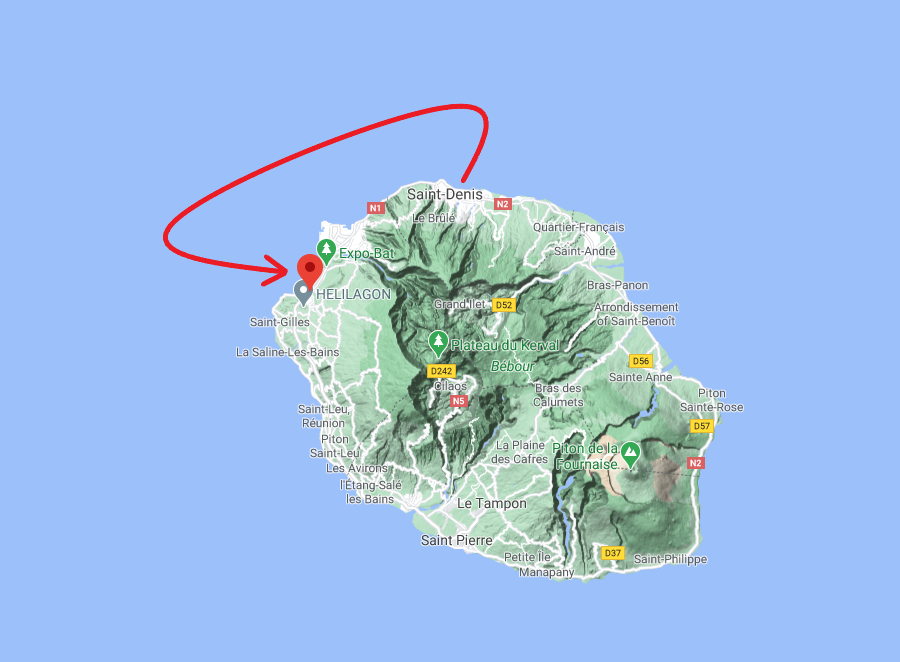 At the end of the day on April 30, 1721, the Victorious and the Cassandra attacked and captured the city of Ostend in the port of Saint-Paul. After this new capture, they set off for the island of Sainte Marie in Madagascar. [http://www.mi-aime-a-ou.com/histoire_annee_1721.php]
At the end of the day on April 30, 1721, the Victorious and the Cassandra attacked and captured the city of Ostend in the port of Saint-Paul. After this new capture, they set off for the island of Sainte Marie in Madagascar. [http://www.mi-aime-a-ou.com/histoire_annee_1721.php]
Madagascar, April 1721 🔗
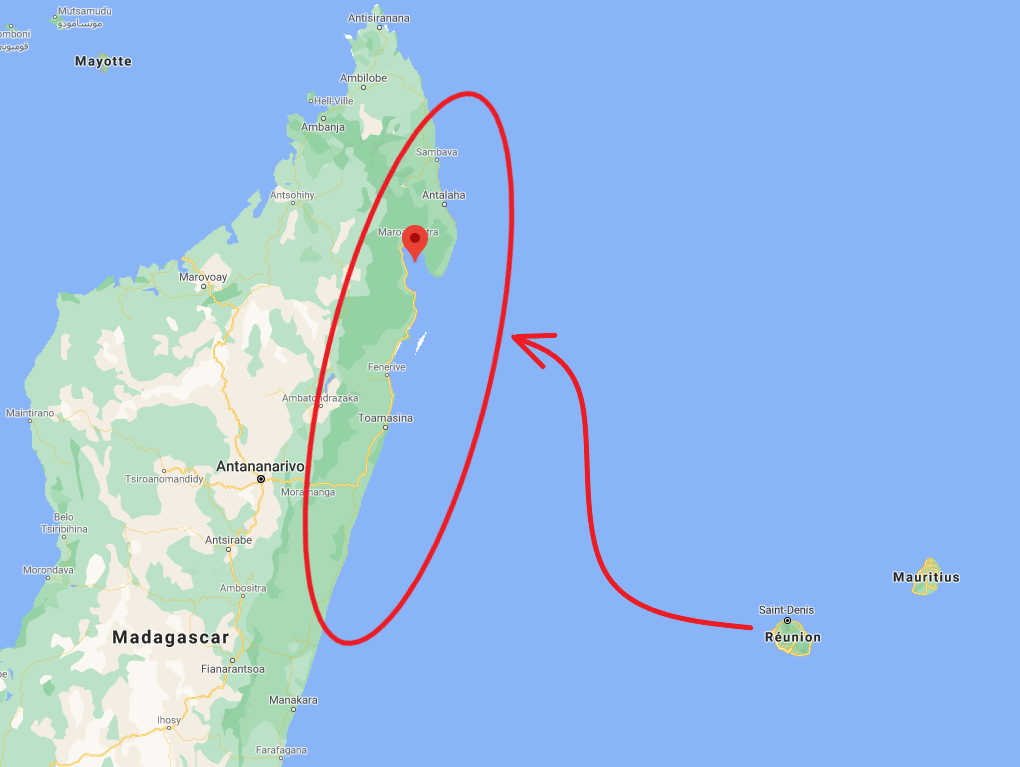 When the loot was divided, each pirate received at least 50,000 golden Guineas, as well as 42 diamonds each. Seagar died when they sailed to Madagascar to divide their take; Levasseur and Taylor split the remaining gold, silver, and other objects, with Levasseur taking the golden cross. [http://brethrencoast.com/pirate/Olivier_Levasseur.html]
When the loot was divided, each pirate received at least 50,000 golden Guineas, as well as 42 diamonds each. Seagar died when they sailed to Madagascar to divide their take; Levasseur and Taylor split the remaining gold, silver, and other objects, with Levasseur taking the golden cross. [http://brethrencoast.com/pirate/Olivier_Levasseur.html]
Sainte-Marie Island, around summer 1721 🔗
At that time, part of the crew settled on Ile Sainte Marie.[http://brethrencoast.com/pirate/Olivier_Levasseur.html]
Fort Lagoa (Baía da Lagoa, Maputo Bay, Mozambique), 1722 🔗
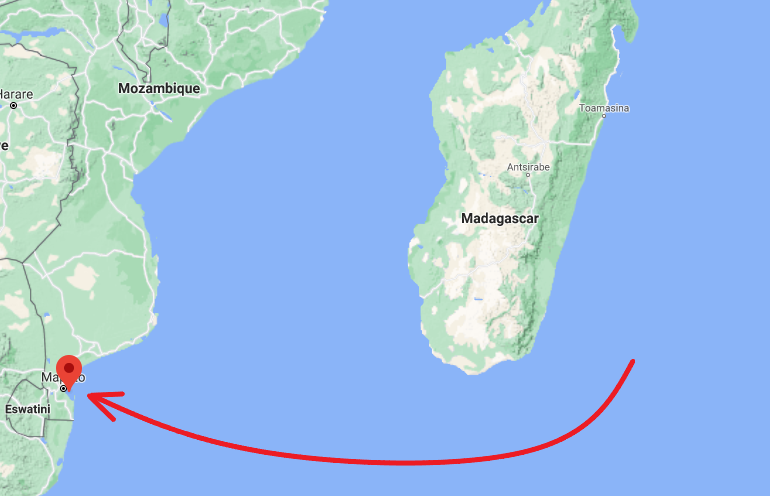 Taylor and Levasseur sailed on and robbed the ship “Duchesse de Noaelles” and then plundered the Dutch garrison at Fort Lagoa in 1722. [http://brethrencoast.com/pirate/Olivier_Levasseur.html]
Taylor and Levasseur sailed on and robbed the ship “Duchesse de Noaelles” and then plundered the Dutch garrison at Fort Lagoa in 1722. [http://brethrencoast.com/pirate/Olivier_Levasseur.html]
| 1721-12-30 | Duchess de Noailles was captured by pirates 10 Duchess de Noailles was captured and burned by La Buse and Taylor, while she was |
Madagascar, 1722 🔗
La Buse and his men retreat to Antongil Bay on the east coast of Madagascar not far from Sainte Marie. Taylor prefers to sail aboard the Cassandra towards Porto Bello (Panama), where a promise of amnesty awaits him. [http://www.mi-aime-a-ou.com/la_buse.php]
After returning to Madagascar, the two pirate crews parted ways and Taylor later accepted a Spanish pardon and commision. Taylor headed for the West Indies, arriving there in 1723. [https://en.wikipedia.org/wiki/John_Taylor_(pirate)]
| 1722-09-24 Mahajanga | The pirates left Bombetoke 39 40 (Bombetoka Bay, Madagascar) The pirates left Bombetoke. The Dutch settlers were marooned. 22 men were left on Ma... [http://www.historylogbook.org/index.php/show-item?Itemid=126&option=com_content&view=article&id=26&itemId=26] |
Sainte-Marie Island**,** around ~1723 🔗
“In 1724, making the most of the charter of clemency offered to freebooters by the king of France, La Buse decided to retire to Île Sainte-Marie. No more piracy! But he refused to give back his treasure, a precondition of the royal amnesty.” (https://escales.ponant.com/en/pirate-la-buse-2/)
Seychelles Archipelago, 1724 🔗
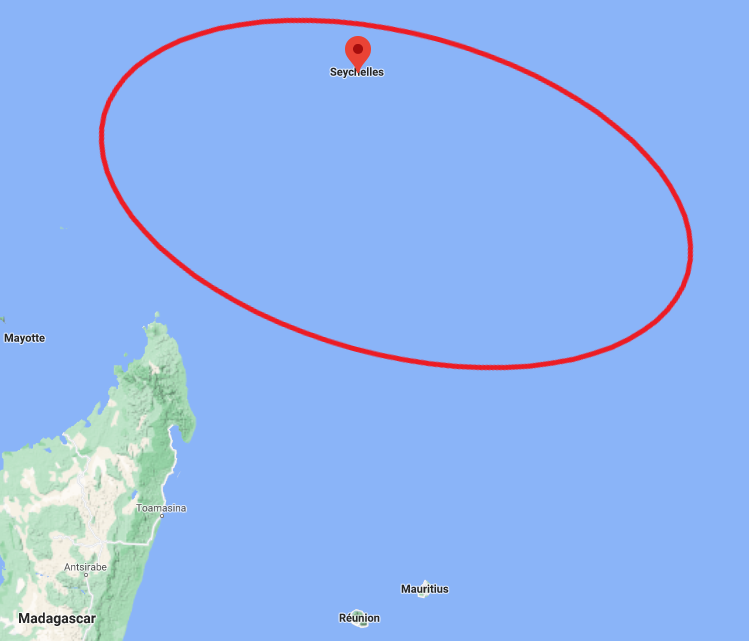 In 1724, Levasseur/La-Buse sent a negotiator to the governor on Bourbon Island (Reunion Island) to discuss an amnesty offered to all pirates in the Indian Ocean who would give up their pirate activities. However, Levasseur decided to refuse the amnesty and secretly settled in the Seychelles archipelago. [https://en.wikipedia.org/wiki/Olivier_Levasseur]
In 1724, Levasseur/La-Buse sent a negotiator to the governor on Bourbon Island (Reunion Island) to discuss an amnesty offered to all pirates in the Indian Ocean who would give up their pirate activities. However, Levasseur decided to refuse the amnesty and secretly settled in the Seychelles archipelago. [https://en.wikipedia.org/wiki/Olivier_Levasseur]
Madagascar, ~1729/1730 🔗
Around 1729, being a pilot in the Antongil (Madagascar) bay, he offered his services to The Medusa vessel of the Indies Company that wanted to come into the harbor. The Hermitte’s Captain, the ship commander, recognized him, and remembering that the pirate had many times boarded ships from his company, arrested him. [http://www.pirates-privateers.com/olivier-levasseur-la-buse.htm]
Eventually he was captured near Fort Dauphin, Madagascar. The French authorities then took him to Saint-Denis, Réunion and hanged him for piracy at 5 p.m. on 7 July 1730.
Shortly before, it is said that La Buse opened a locket around his neck and threw a piece of paper inside into the crowd. “Mes trésors à qui saura comprendre!” (“my treasure to the one who understands”).
| 1730-07-07 Saint Denis, Reunion | Oliver Levasseur died 81 La Buse was hanged at Saint Denis on Reunion |
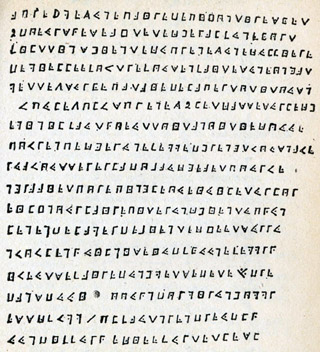 So the pirate captain Olivier Levasseur alias La Buse was hanged, the cryptogram was thrown into the crowd and the hidden treasure was offered to the people by a cryptogram Who picked up the secret message? No one could really say, but for more than two centuries the Indian Ocean from the Seychelles Islands to the tip of Madagascar has been the center of relentless search and rich in sealed documents, riddles and engraved signs, all of which, according to legend, have to do with La Buse’s immensely valuable gold and diamond treasure.
So the pirate captain Olivier Levasseur alias La Buse was hanged, the cryptogram was thrown into the crowd and the hidden treasure was offered to the people by a cryptogram Who picked up the secret message? No one could really say, but for more than two centuries the Indian Ocean from the Seychelles Islands to the tip of Madagascar has been the center of relentless search and rich in sealed documents, riddles and engraved signs, all of which, according to legend, have to do with La Buse’s immensely valuable gold and diamond treasure.
…
…
…
other island 1
other island 2
…
Update for the years 2021-2024 🔗
In the years 2021 to 2024, the legend of the pirate captain Olivier Levasseur, also known as La Buse, and his lost treasure continues to intrigue many. The historical route course of La Buse, as detailed in the previous text, remains a topic of fascination for treasure hunters and historians alike. However, there have been some developments and updates regarding the search for the elusive treasure.
Recent expeditions and research efforts have focused on uncovering new clues about La Buse’s whereabouts and the possible location of his hidden riches. Modern technologies, such as advanced sonar equipment and underwater drones, have been employed to explore the depths of the Indian Ocean and the islands associated with the pirate’s journey.
In the year 2024, a team of researchers announced a breakthrough in the search for La Buse’s treasure. Using cutting-edge technology, they claim to have discovered a sunken shipwreck off the coast of Madagascar that they believe could be the Indian Queen, the vessel captained by La Buse. Initial assessments suggest that the wreck may indeed hold the long-lost treasure, including gold, diamonds, and other valuable artifacts.
Furthermore, in a surprising turn of events, a previously unknown journal believed to belong to one of La Buse’s crew members was unearthed on Sainte Marie Island. The journal contains cryptic clues and a detailed account of the pirate’s final days, hinting at the possible whereabouts of the treasure.
Despite these exciting developments, the mystery of La Buse’s treasure remains unsolved. Treasure hunters and historians continue to scour the Indian Ocean, the Seychelles, Mauritius, and other islands in search of the elusive riches. The legend of La Buse lives on, captivating the imagination of adventurers and researchers around the world.
As we reflect on the historical accounts of Olivier Levasseur and his legendary treasure, it is evident that the allure of hidden riches and swashbuckling tales transcends time. The story of La Buse continues to inspire explorers and storytellers, keeping the spirit of adventure alive in the modern era.
In conclusion, while the details of La Buse’s pirate exploits may be rooted in the past, the quest for his treasure remains a timeless pursuit that captures the imagination of many to this day.
Update for the years 2021-2024 🔗
The search for the lost treasure of the infamous pirate captain Olivier Levasseur, known as La Buse, continues to be a subject of fascination in the years 2021 to 2024. Despite the passage of time, the mystery surrounding La Buse’s hidden riches has not diminished, sparking renewed interest and exploration efforts.
Recent advancements in marine archaeology and treasure hunting technology have provided new opportunities to unravel the enigma of La Buse’s treasure. Expeditions to the Indian Ocean, Madagascar, the Seychelles, and other key locations mentioned in historical accounts have yielded promising leads and discoveries.
In 2024, a team of researchers made a significant breakthrough in the search for La Buse’s treasure. Utilizing state-of-the-art sonar scanning equipment, they identified a submerged shipwreck off the coast of Mauritius that is believed to be linked to the pirate captain. Initial findings suggest that the wreck may contain valuable artifacts and clues to the whereabouts of the legendary treasure.
Moreover, recent investigations have uncovered new archival documents and eyewitness testimonies that shed light on La Buse’s final days and the fate of his ill-gotten wealth. These discoveries have reignited public interest in the pirate’s story and spurred further exploration of historical sites connected to his exploits.
As of 2024, the hunt for La Buse’s treasure remains ongoing, with experts and enthusiasts from around the world joining forces to piece together the puzzle of his hidden riches. The allure of lost treasure, adventure, and swashbuckling tales continues to captivate imaginations and fuel the search for one of history’s most elusive prizes.
While the specifics of La Buse’s pirate escapades may be shrouded in myth and legend, the quest for his treasure serves as a reminder of the enduring appeal of discovery and the thrill of uncovering hidden secrets from the past. As the search for La Buse’s lost fortune enters a new chapter, the legacy of the infamous pirate lives on in the hearts of those who dare to seek the truth behind the myth.